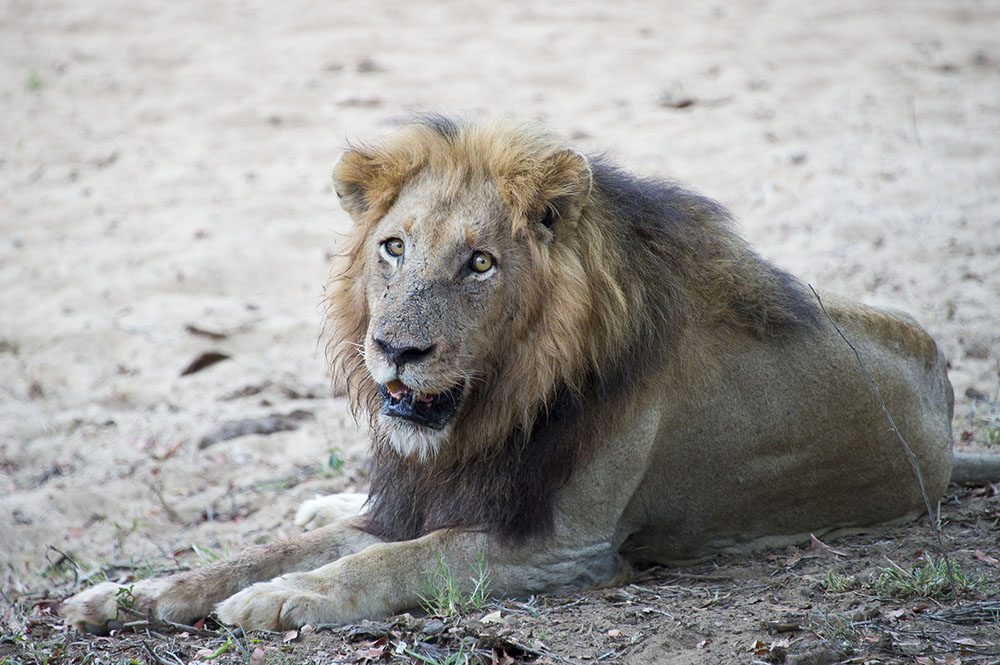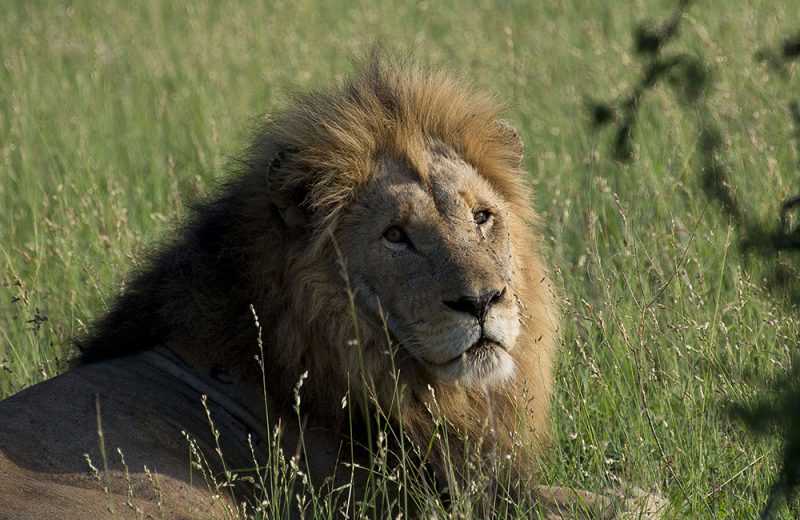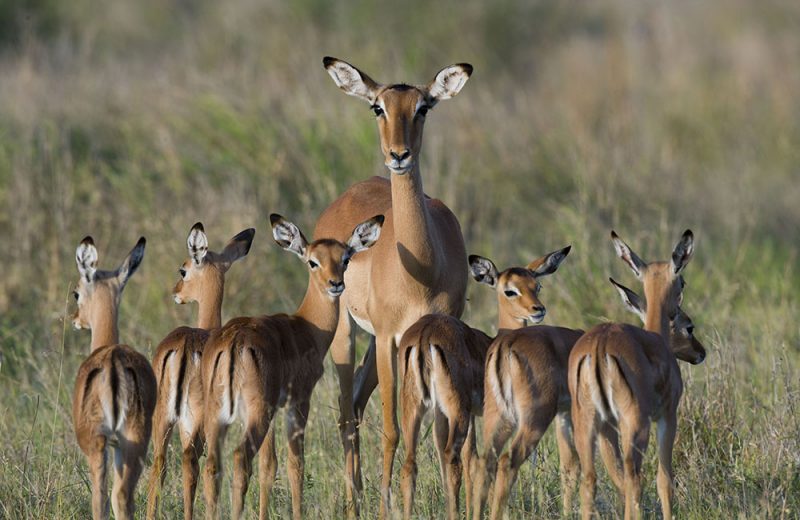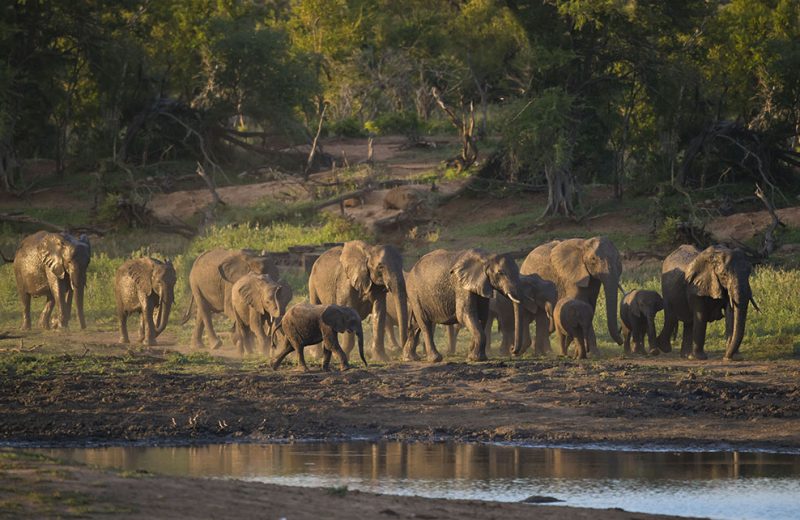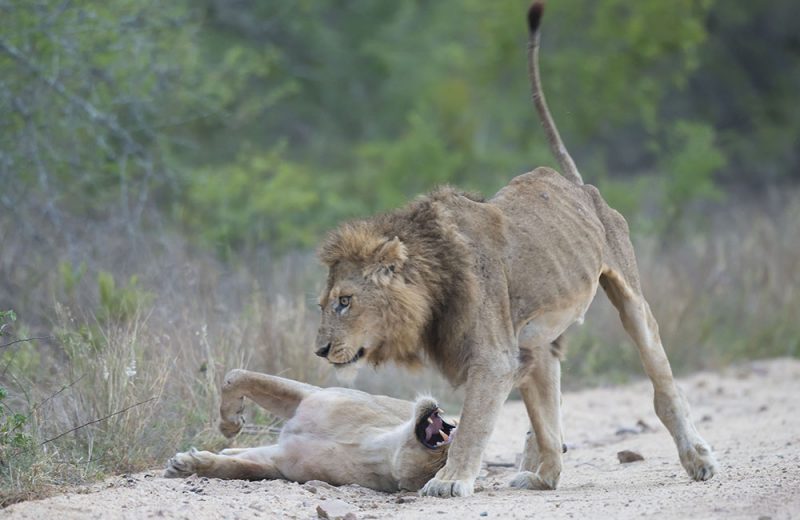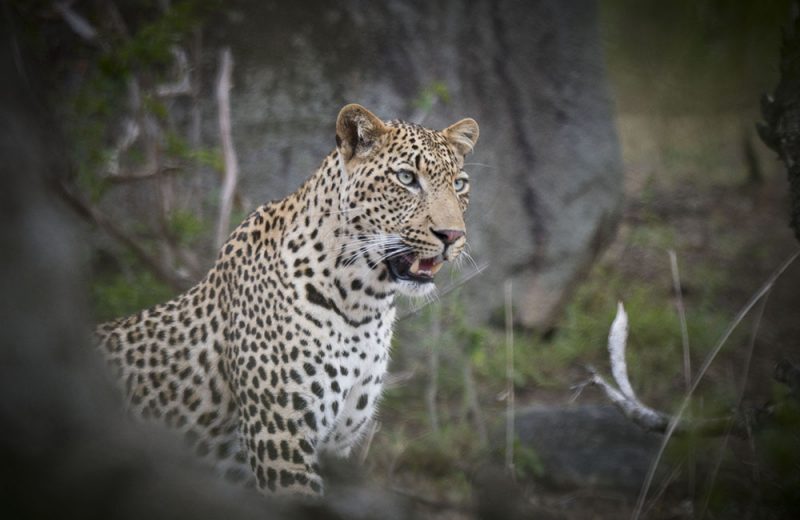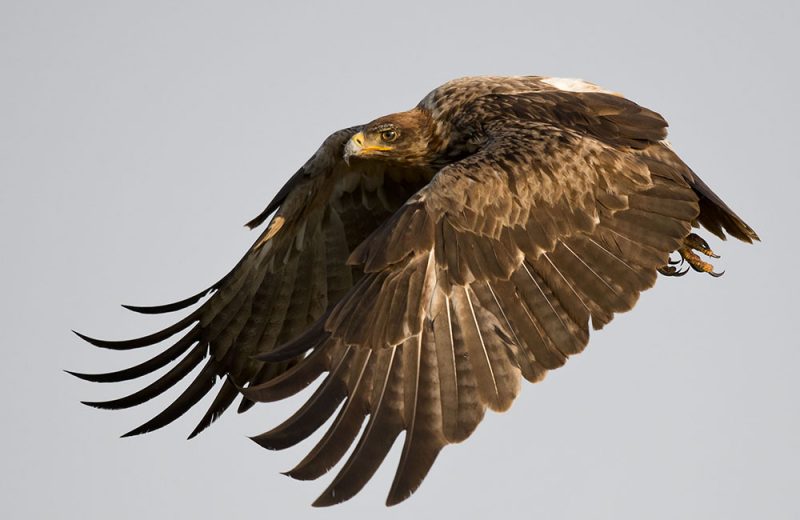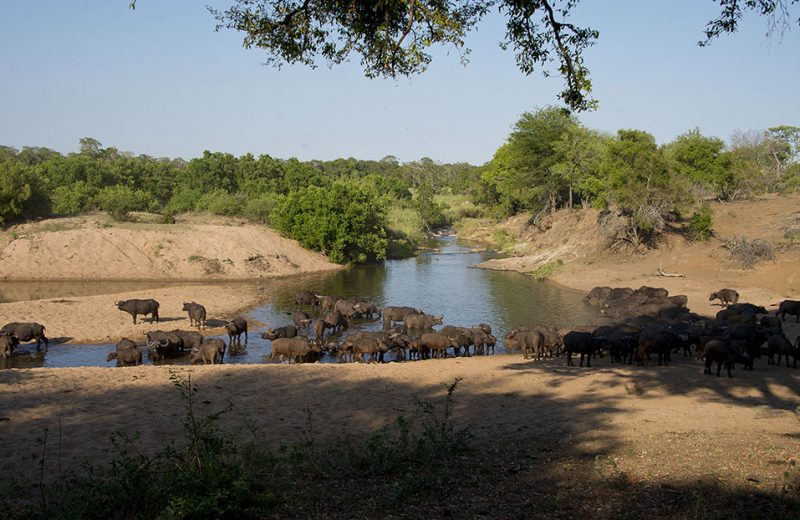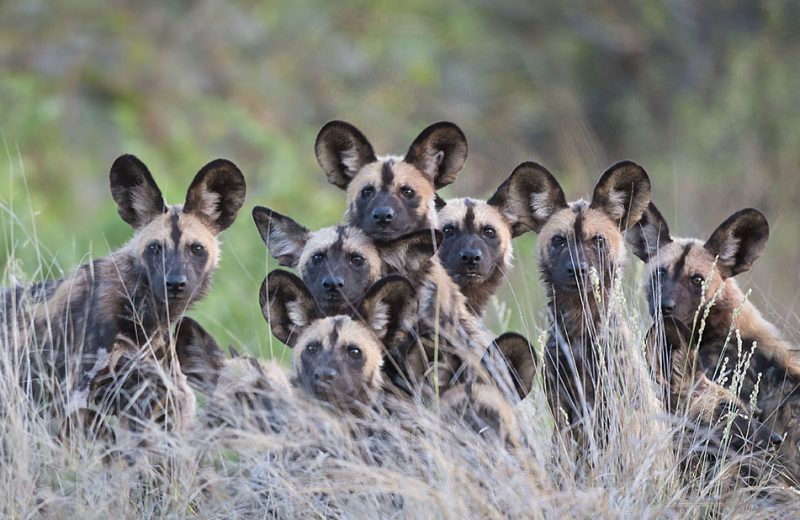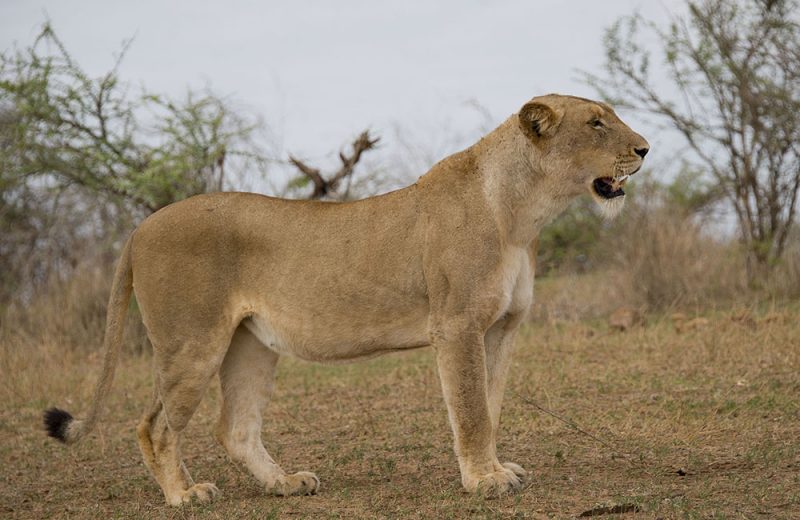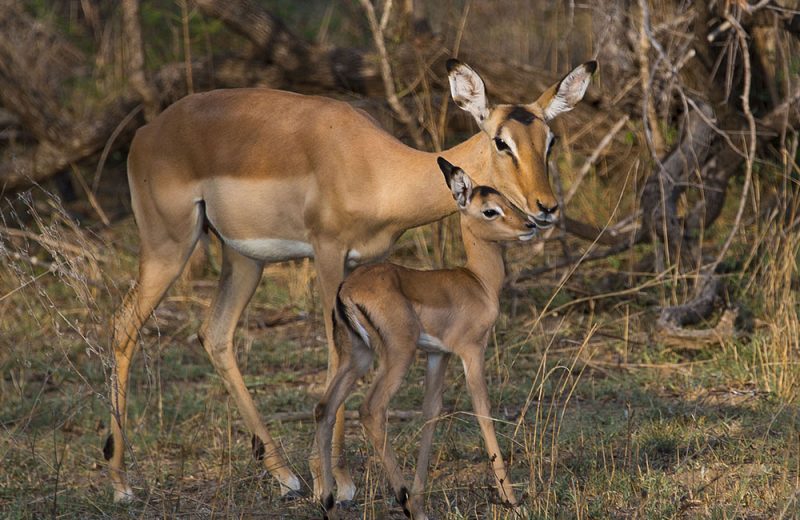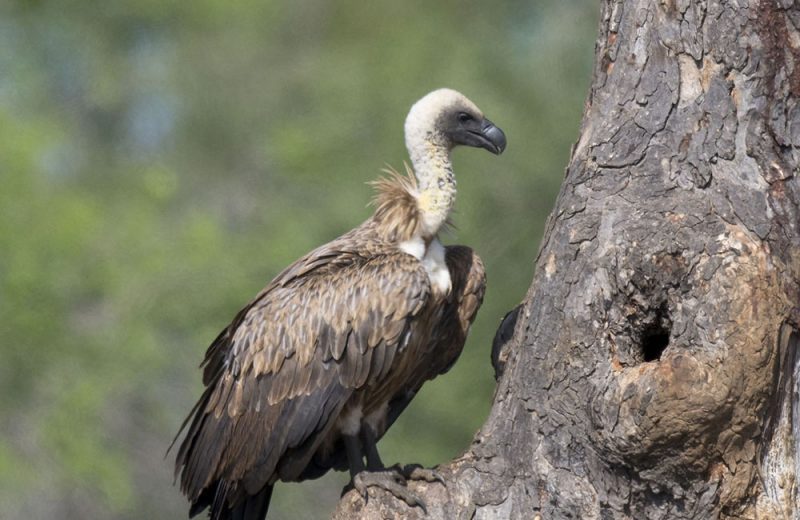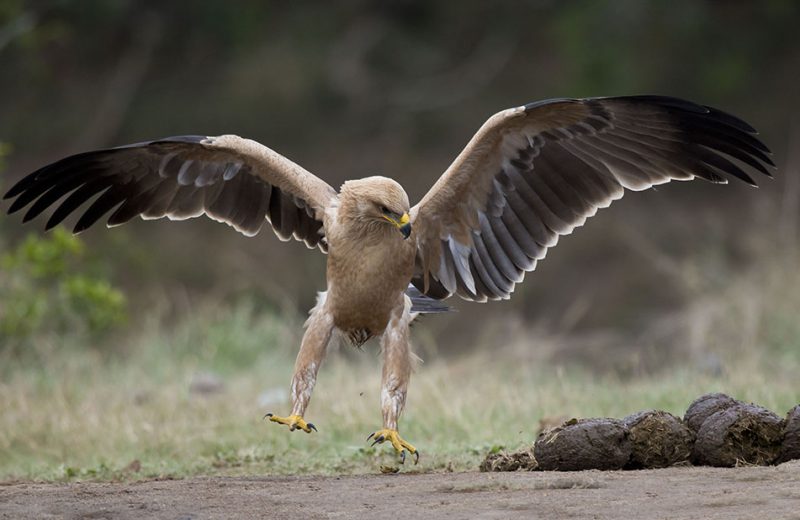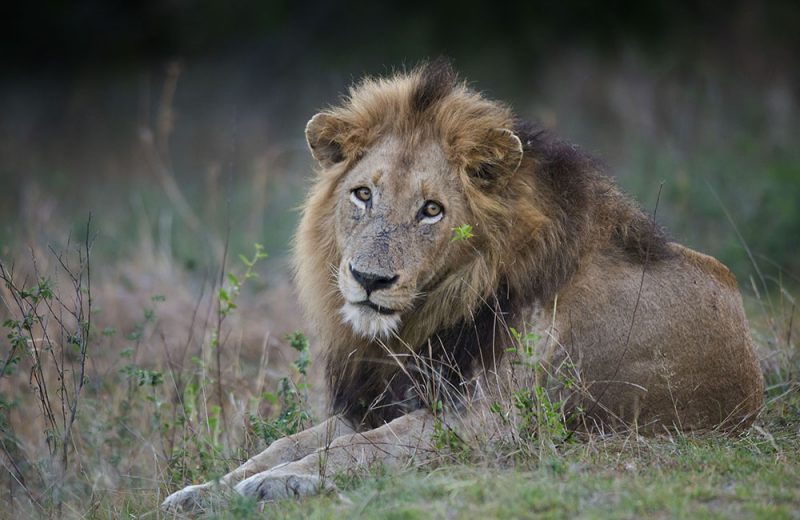Wednesday, 18th
The dry weather cycle seems to be breaking. A high cloud cover sees us travelling down Salitje S30 early on a dark morning. Everything is quiet until we reach the Nwatindlopfu lookout spot over the Sabie River.
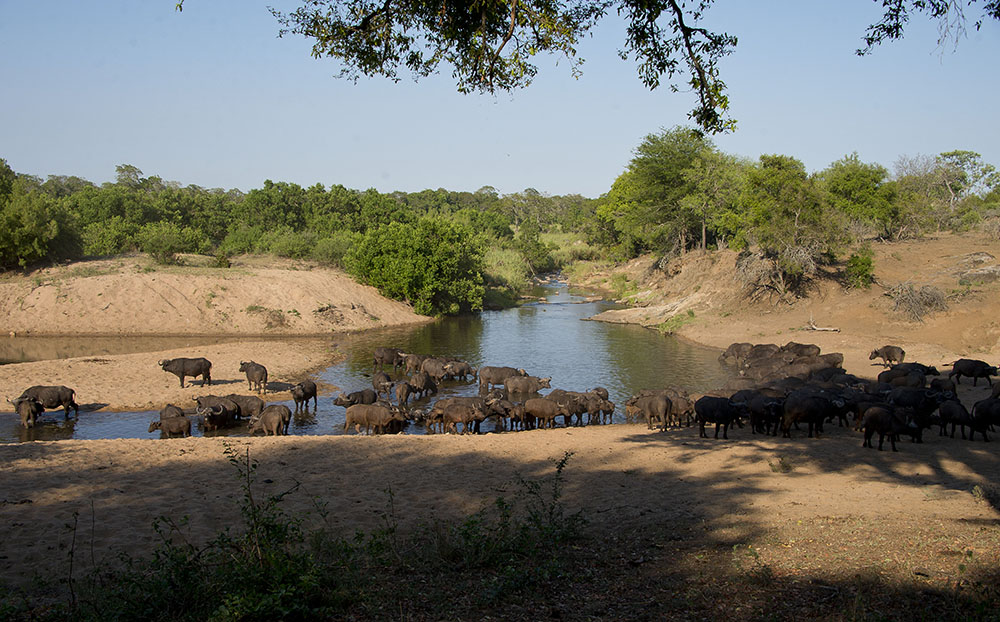
Some vultures in the trees alert us to some unusual goings on and as we arrive at our usual parking place we find a lioness 5m away gnawing on the remains of a young buffalo.
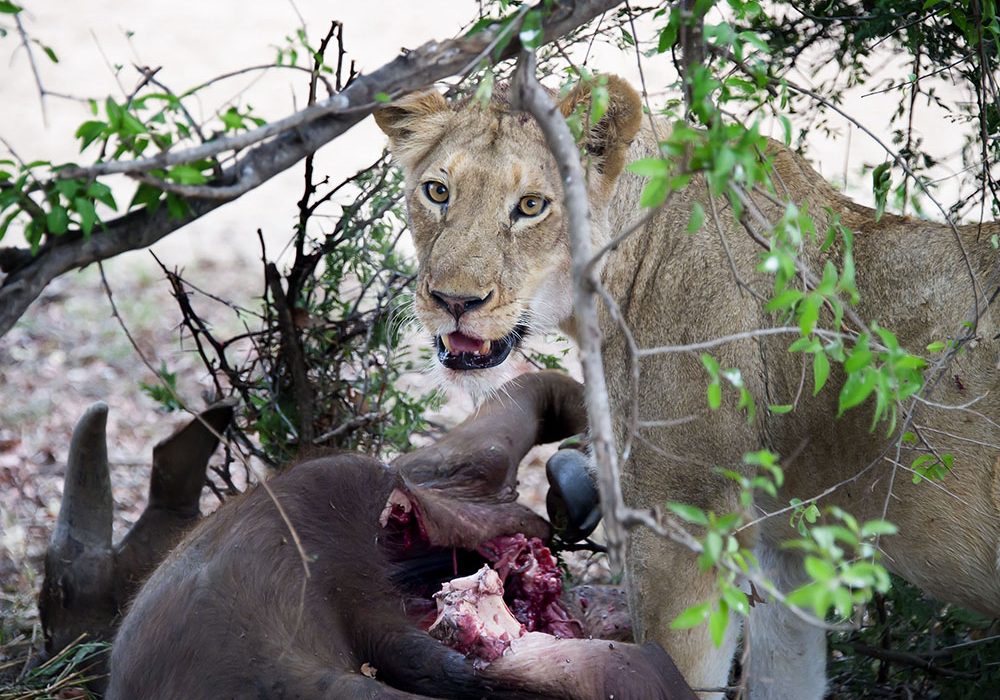
Meanwhile a male lion and another lioness are sprawled on the nearby sand bank.
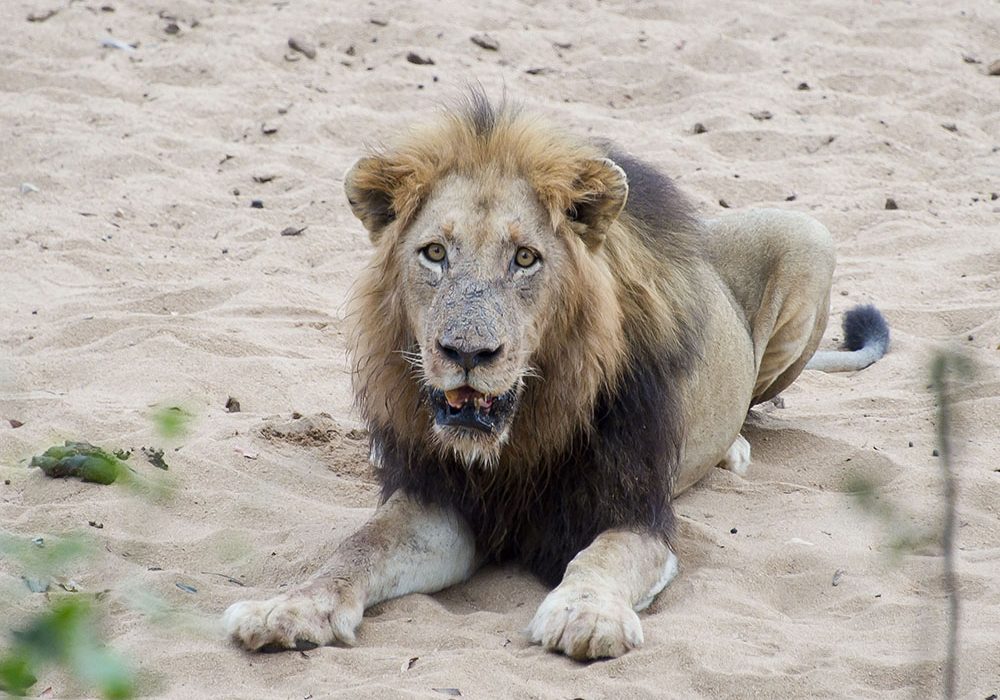
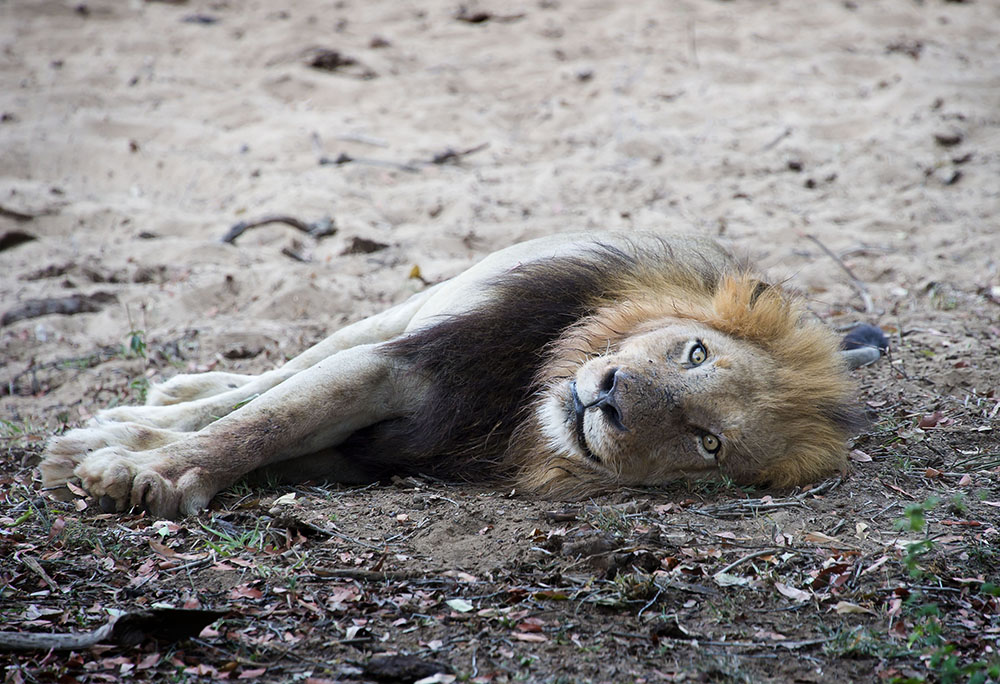
The lioness on the kill continues her meal completely ignoring our presence.
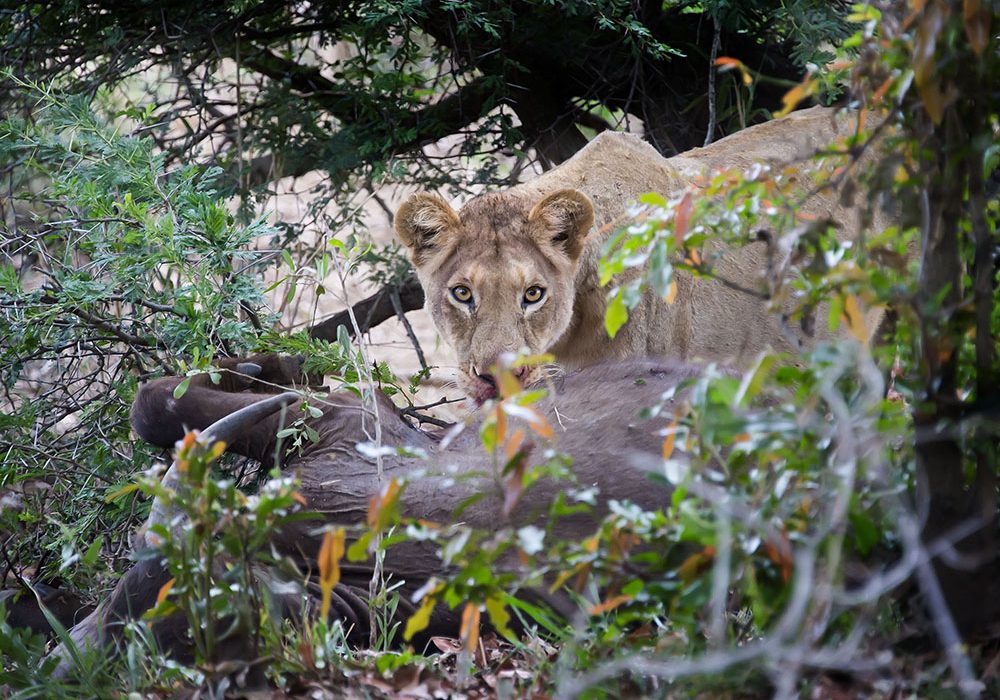
Our way back towards the high-level bridge is delayed by an enormous old tusker who we follow as he slowly saunters along the road. He is suffering from advanced BO and it would seem that a leaky bladder is causing his problem. Eventually he wanders into the veld.

For some reason, the game is not nearly as plentiful as it was on our first trips down Salitje when we first arrived at Skukuza. To add to my woes my new camera is giving a few problems and I am a little distracted by it.
Still cloudy, we set off this afternoon down the H4-1 and onto the H13 bridge over the Sabie. I am particularly keen to find an African Finfoot down in the river but it has remained elusive for years now. But a passing bird enthusiast tells me that they have recently been spotted here.
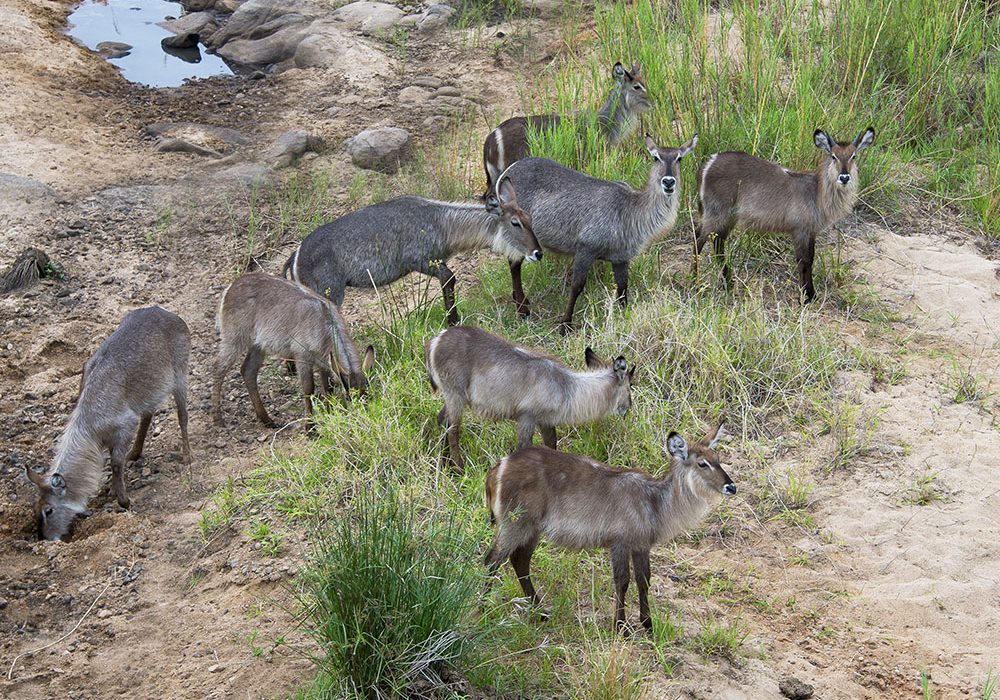
We continue along the H13 towards the H1-2 (Skukuza-Tshokwane) road. We have not gone far before we hear the call of a Coqui Francolin. David finds him in grass on an ant mound.
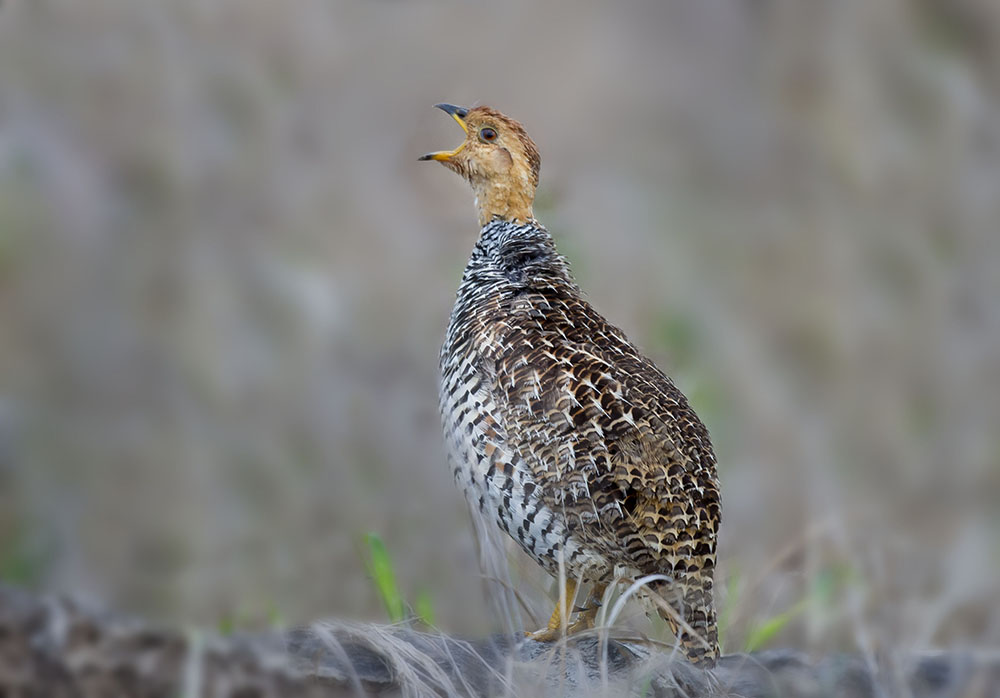
Nearby we see our first European Bee-eater of the summer.

We creep back along the Maroela Loop but all is quiet. The sun finally breaks through and we are treated to a lovely sight of this great red ball sinking below the horizon.
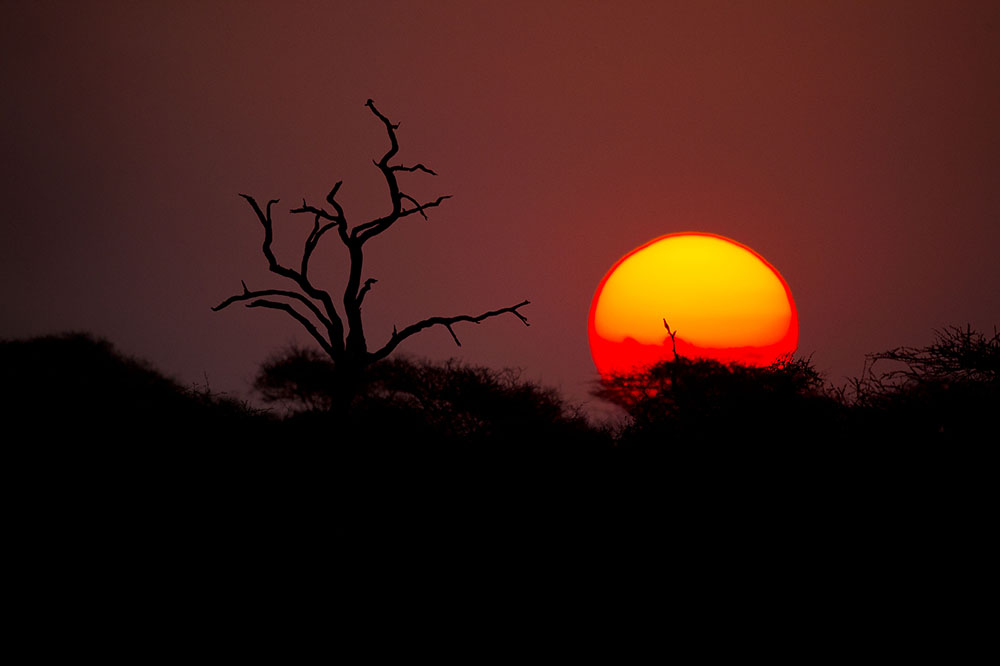
Other than the lions, perhaps a quiet day but always enjoyable.
Thursday, 19th
We are heading again for Lower Sabie today. A brisk south wind is blowing and I do hope that the dry weather spell is going to break.
We again idle down the Sabie river road. We seem to be seeing Ground Hornbills quite frequently.
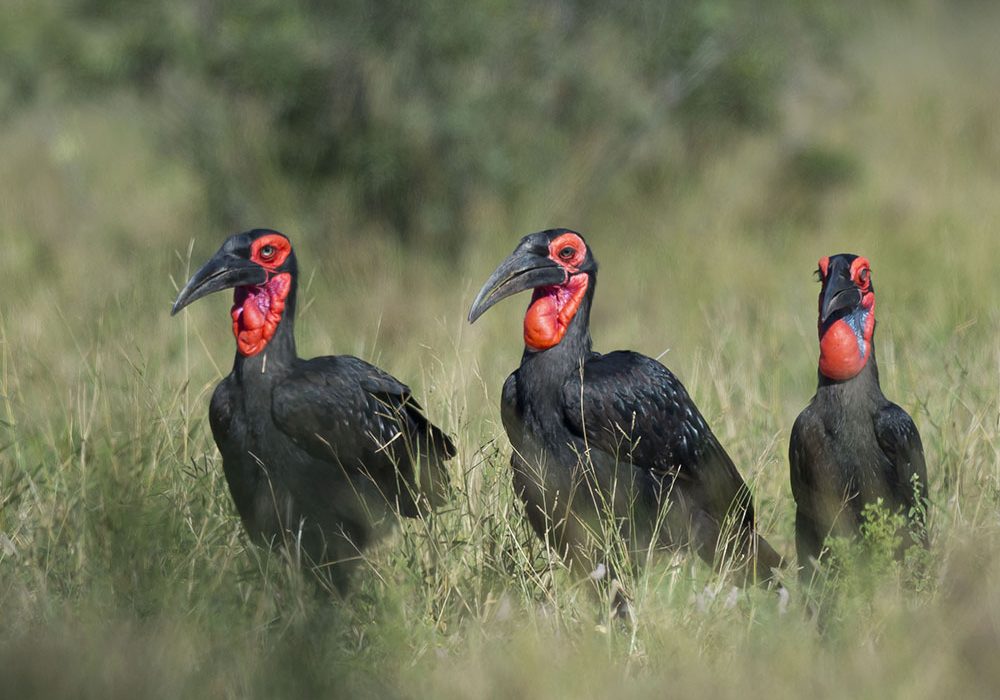
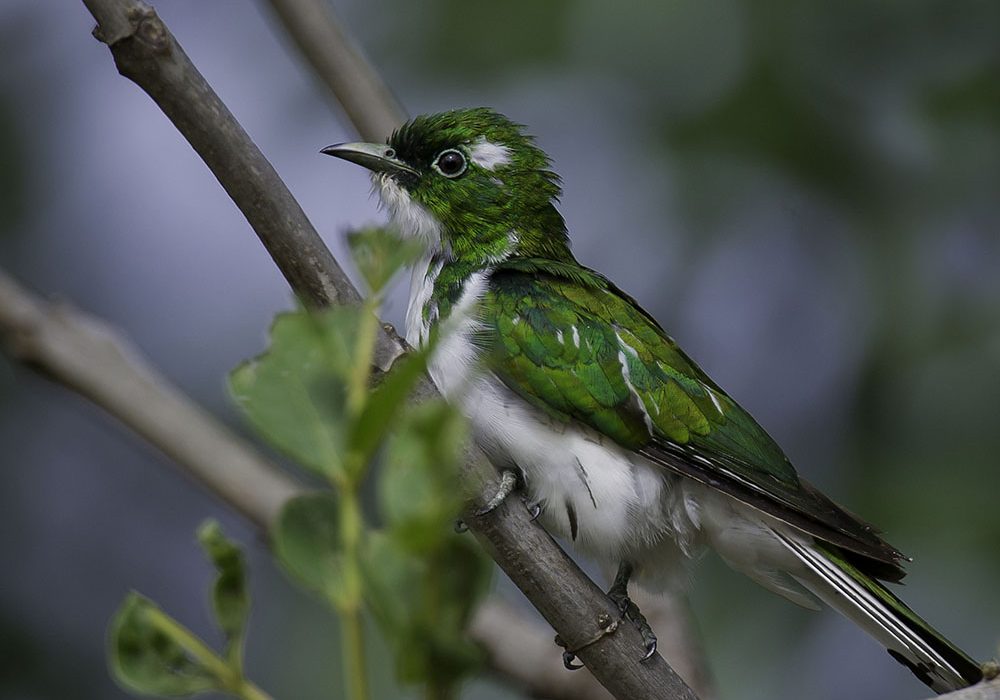
The piping call of the Orange-breasted Bushshrike is so common along this route.
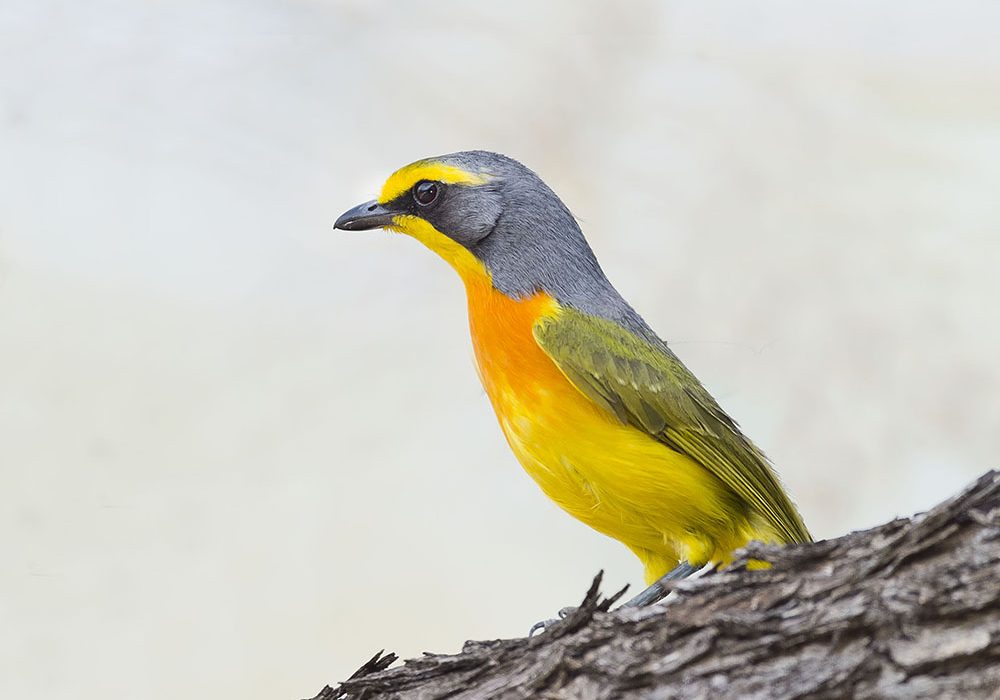
So too the diminutive Stierling’s Wren-warbler which one would never see – but for its call.
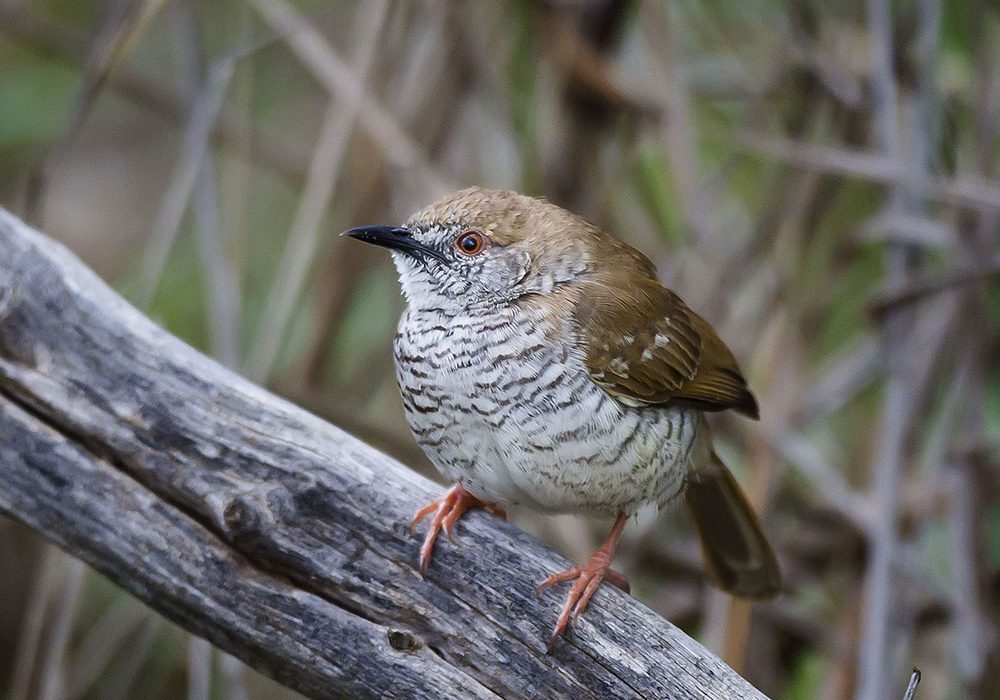
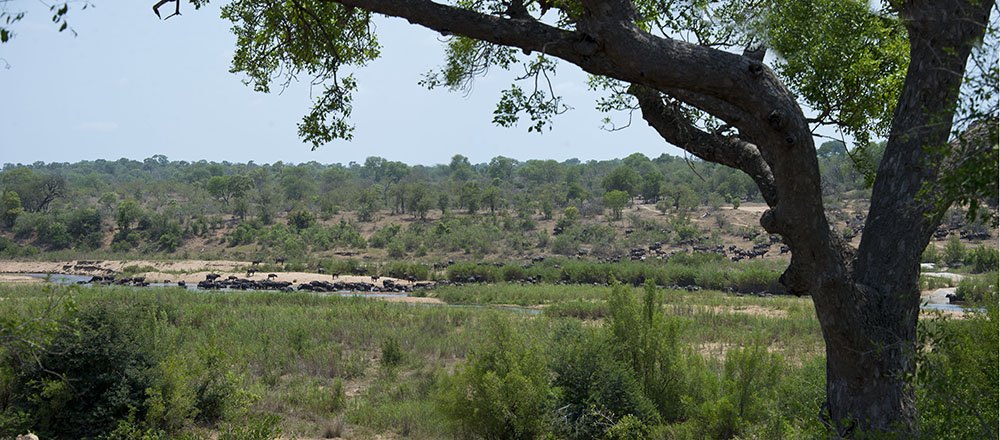
But despite really looking hard and having eagle-eyed David on board, Nothing extraordinary shows itself. Of course impala are everywhere whilst kudu, nyala and bushbuck are plentiful.
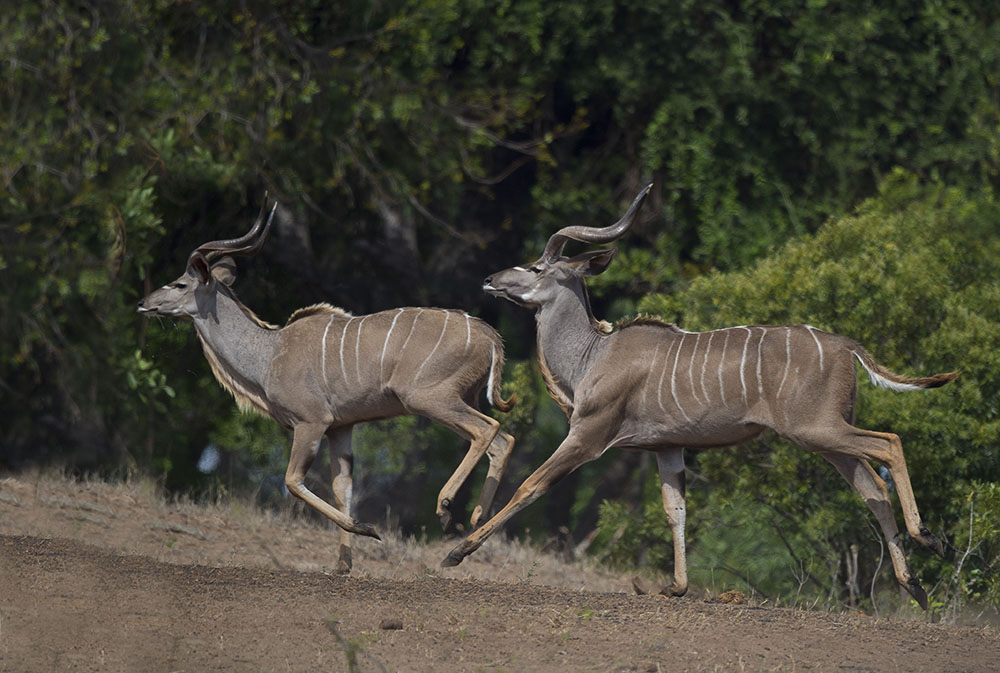
At Sunset Dam we do see a Marsh Sandpiper – distinctive with its straight needle-like bill.
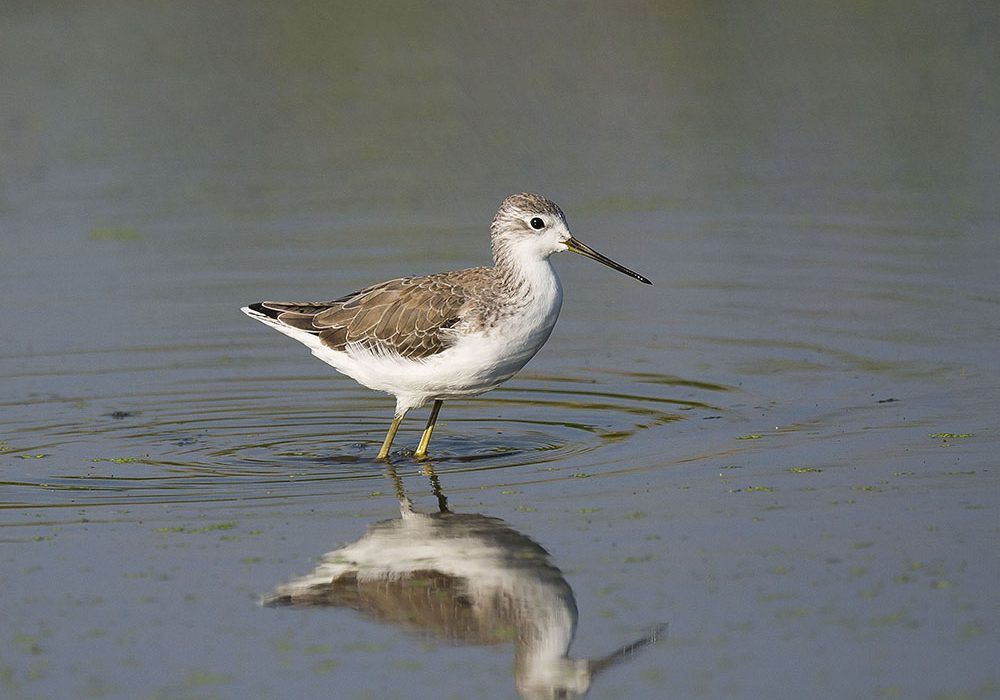
Droughts rob one of so much enjoyment of the Park. Rain brings the insects which brings in the birds, pools bring tadpoles and frogs which again attract the waterbirds, storks and herons. Thick grass brings the seed eaters and gives cover to the quails and francolins. But as I write this, lightning is flashing and drops of rain are falling. So perhaps the rains will finally begin in earnest.

